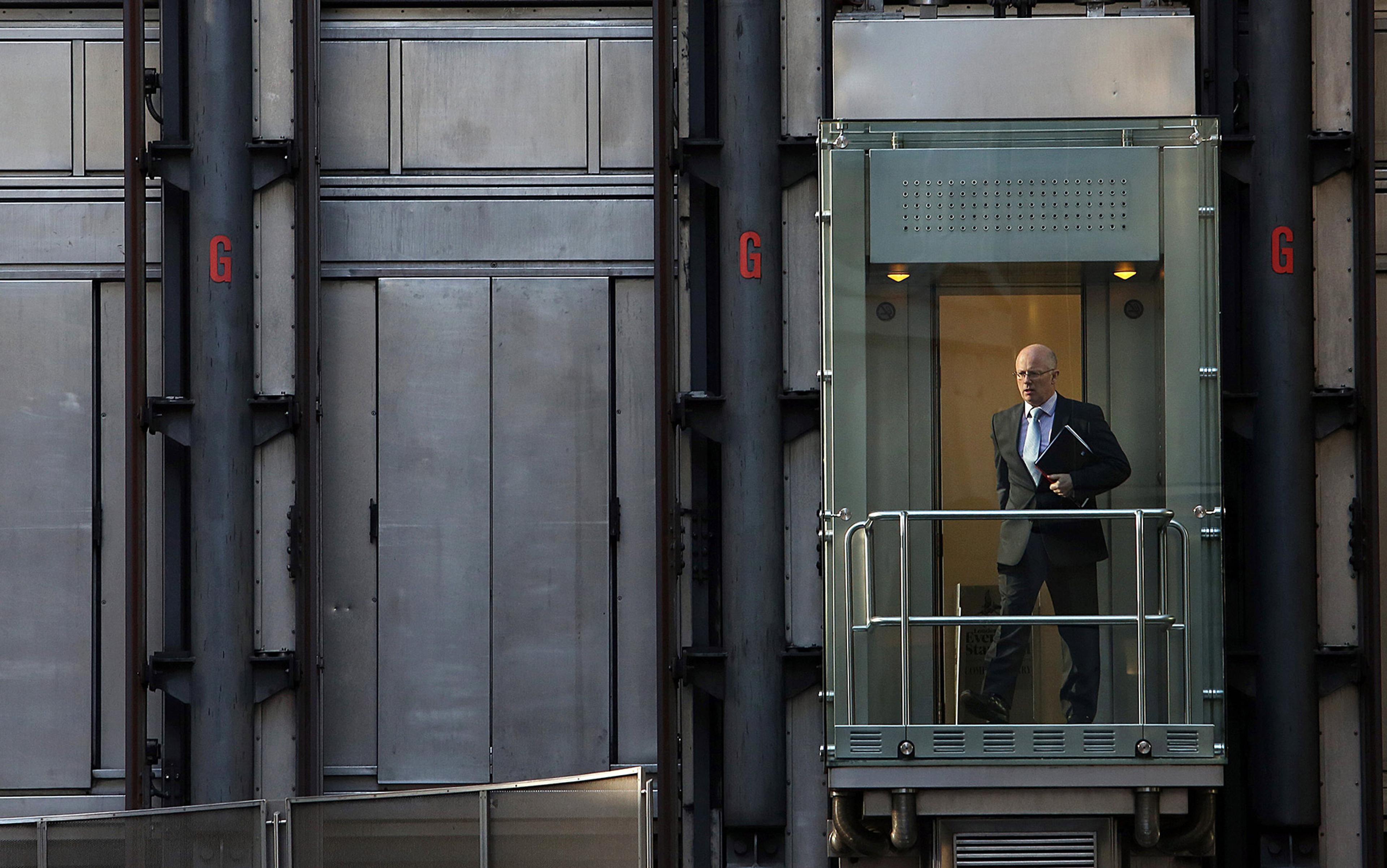Why do corporations exist? These hierarchical, self-contained assemblies of labour, capital and know-how have been with us for so long that by now they seem almost ‘natural’. But apart from what they make or do or sell, the very structure of the company has a history.
The clearest rationale for corporations comes from the Nobel prizewinning economist Ronald Coase and his 1937 theory of the firm. Imagine you want to make money by selling widgets. What’s the best strategy: sign up talent individually and on a needs-only basis, or hire staff to do the various jobs in-house? Coase showed that it made more economic sense to incorporate as a company, because it allowed you to minimise three very important costs. The first reduction would come from resourcing: it’s less expensive to find and recruit people with the right skills and knowledge from inside the company than to look for them externally every time you want something done. The second line-item is transacting, or managing processes and resources: it’s less of an administrative burden to have teams in-house than to keep an eye on multiple external contractors. And finally there’s contracting: every time work takes place within a company, the rules and conditions are implied in the employment contract, not negotiated afresh each time. By reducing these three costs, Coase claimed, corporations are the optimal structures for increasing economic activity.
But what if the nature of the economic puzzles that corporations evolved to solve have shifted? Thanks to software, the internet and artificial intelligence, the expenses that Coase identified can now be reduced just as well with tools from outside the company as they can from within it. Finding freelance workers via online marketplaces can be less costly, less risky and quicker than recruiting full-time employees. Collaboration tools are opening up space for manager-free forms of work. And contracting costs are likely to fall markedly thanks to the advent of blockchain protocols – algorithms that replace trusted third parties, and instead automatically verify transactions using a huge digital ledger, spread across multiple computers. As a result of these innovations, a new way of working is emerging: a series of interactions that are open, skills-based and software-optimised. Where once we had the ‘corporation’, instead we are witnessing the ascendancy of the ‘platform’. The question is: should we see this as a promise, or a threat?
In their book Platform Revolution (2016), Geoffrey Parker, Marshall Van Alstyne and Sangeet Paul Choudary argue that businesses used to be ‘pipes’ (linear models) and are becoming ‘platforms’ (networked models). Before the digital revolution, firms created goods and services, which they pushed out and sold to customers. The flow was from point A to point B – like pipes connecting deep-sea oil wells to the person who fills up the tank of their car with refined petrol.
Unlike pipes, however, platforms disrupt the clear-cut demarcation between producer and consumer, because they enable users to create as well as to consume value. Platforms need a different, non-pipe-like infrastructure. The major business challenge is to attract creators and consumers in the right proportions for transactions to occur. Platforms are in fact very similar to marketplaces: both create economic value by fostering exchanges between two (or more) groups. Now, though, this value can be generated within a company, not just outside it.
Uber is the classic case: for consumers to be interested, there have to be enough drivers on the platform to make it easy to order a ride. But for drivers to be interested, there have to be enough consumers to guarantee a basic income. Finding this equilibrium requires significant capital upfront – essentially, you have to spend money or give an incentive for suppliers to jump onboard while consumers are still virtually absent, until a critical mass is reached on both sides. But at a certain point, if all goes well, so-called ‘network effects’ kick in. The platform suddenly becomes very attractive to many more suppliers and consumers, which can lead to transactions increasing exponentially. Now the owners of the platform can make money by charging ‘rent’, which entails taking a percentage from every transaction. Rents continue to grow with the network, and are siphoned off to whoever owns it. This is what makes those platforms economically valuable.
No one prevents workers from moving across subcircles: no managers stand in the way
But not all platforms are created equal. In the 1990s and early 2000s, you’d ‘browse the web’ and encounter an anarchic, open space of chat rooms and internet forums, where everyone had reasonably equal standing in competing for interest and attention. In the second phase of the internet, though, these spaces were replaced by closed, proprietary services administered by the big four tech companies: Google, Apple, Facebook and Amazon. Users migrated towards those platforms for reasons of efficiency and convenience, which created the tech oligopolies we see today. But those businesses are centralised and owned by a precious few, and the implications are profound. Consumers’ data can be unscrupulously exploited for profit and influence. Developers must abide by rules set by the corporate bosses – and those rules can change at any time, unpredictably, to suit the special interests of a few. In other words, the competitive field of the internet is no longer level but profoundly skewed towards the tycoons that own the digital platforms where we conduct much of our daily lives.
Platforms don’t only reinvent how companies engage with their users, but also how work is done. As digital technologies deconstruct jobs into tasks executed by a mix of humans and algorithms, anxiety is growing about the ‘gig economy’ – where work is temporary, skills-based, and on-demand. Whether you are a driver for Uber, a financial analyst contracted via Upwork, or a software developer micro-tasking in Google’s or Amazon’s development framework, your livelihood depends on cyclical fluctuations of demand for your skills, your rating, and your ability to market yourself effectively against the competition. Moreover, residual profits go back to the owners of the platform, who are no longer obliged to provide participants with the protections associated with employment. Add in the threat of automation and artificial intelligence, and the outcome is a survival-of-the-fittest scenario, where only the most ruthless and capable stand a chance.
Even the ‘platforming’ of companies with ‘proper’ employees can clash with human nature. Zappos, the digital shoe and clothing shop currently owned by Amazon, employs around 1,500 people and sells an estimated $3 billion worth of products every year. In 2013 it began implementing a system known as ‘holacracy’, a self-organisation method invented by a software engineer. Instead of pyramidal hierarchies, holacracies are organised around ‘circles’; each circle can encompass a traditional function (such as marketing) as well as other ‘subcircles’ that focus on specific projects or tasks. No one prevents workers from freely moving across subcircles in order to achieve their goals, because there are no managers to stand in the way. Instead, software enables collaboration and the performance of individuals and teams, while ‘tactical meetings’ allow for employees to provide feedback about how things are working, in a tightly circumscribed format.
Yet despite the flexibility and efficiency that holacracy promises, participants and observers have criticised the system for failing to accommodate the emotional needs of workers, and reducing humans to ‘programs’ that run on the operating system of digital capitalism. Similarly, Uber drivers report feeling less like humans and more like robots, manipulated by the app, telling them exactly what to do. By deconstructing jobs into tasks, and automating their allocation, the human workers of today risk being transplanted by actual software programs tomorrow. Is there a way to escape such a dystopian future?
A world where the working people can only hope, at best, to make ends meet as second-rate serfs to our digital overlords is not a certainty – especially if workers take control of the platforms for themselves.
This kind of bottom-up, self-organised business network is what Trebor Scholz, a professor at the New School in New York, calls ‘platform cooperativism’. Take Uber, currently valued in the tens of billions of dollars. There’s no reason why a group of drivers couldn’t build a similar platform for themselves; the software tools to develop it are open-source and readily available, and development and design talent can be given incentives to participate.
As it happens, such an initiative is already out there, in the form of a ride-sharing, blockchain-based platform called La’Zooz. Currently anyone can join and begin to earn Zooz tokens – the currency you use to buy a ride, and also a store of value that represents your share of ownership of the business. You earn tokens each time you drive more than 20km with the app, or by contributing code to the design, or by getting others to join.
The dual purpose of Zooz tokens at once democratises the ownership of a platform and allows users to benefit from the value their presence is creating. Recall that in closed platforms, as network effects increase, rents are subtracted and channelled to the shareholders or capital owners. But the users are not partaking in the spoils of their own participation. By contrast, in a tokenised platform, the value created by users’ transactions boosts the value of the tokens they own. Users can extract the maximum gain from their participation via token appreciation, rather than having the economic value of network effects skimmed off by remote shareholders.
Funding decisions are decided by vote; profits and losses are distributed to the token owners
Another example of a democratised structure is the ‘decentralised autonomous organisation’ (DAO), launched in May 2016 on a blockchain-based platform known as Ethereum. Its goal is to become a leaderless venture capital fund. It had no management structure, no board of directors and no employees. Instead, it spreads ownership to more than 18,000 ‘stakeholders’ who own DAO tokens, which also gives them voting rights. Every funding decision is decided by vote and automatically executed following the result, after which profits and losses are distributed to the token owners. Participants have a direct say about decisions ‘on chain’, as it’s called, via the rules that secure transactions on a majority-voting basis. They also have a say ‘off-chain’ via social structures such as discussion groups.
The DAO has no need of a trusted investment manager; instead, its cycles of operation are embedded in ‘smart contracts’ – agreements written in software code that contain rules regarding their execution. Although the DAO has had serious teething issues, including a major hack, at least it demonstrates in principle how a new type of self-governing organisation might be created.
After the free-for-all of the 1990s, and the consolidation of the 2000s, a new, third era of internet evolution is being ushered in by ‘cryptonetworks’. Such platforms are decentralised by nature. Participants purchase and consume tokens (or ‘crypto-coins’) for their transactions on the network, which reaches a settled consensus or record-book of those transactions without the need for a central authority. These two factors – tokens and consensus – result in a democratic and communitarian governance model that was previously impossible without the presence of a trusted third party. And significantly, participants have a right to exit the network whenever they wish by simply selling their tokens, or coins, or – in extreme cases – by ‘hard-forking’ the blockchain, adopting new rules for how to settle the ledger while leaving the old version unchanged.
Cryptonetworks show that it’s feasible for workers to self-organise and build their own platforms – where they are the bosses, income is distributed equitably, and profits and losses are shared. In this collectivist scenario, workers might decide that their mission is to safeguard jobs, offer health insurance or pension funds, and improve employees’ quality of life. The dynamics of tokens make the interests of the participants align around common aspirations and goals, since the appreciation of their tokens comes through the growth of the network.
We’re in the early days of cryptonetworks. They’re still plagued by serious technical shortcomings, notably scalability and performance. Blockchains cannot, at present, process the huge number of transactions that centralised software systems can; and for technical reasons, the amount of energy it takes to secure a transaction on the blockchain increases over time. So why be optimistic that cryptonetworks might be the platforms of the future?
A network of cells expunges hierarchies and collaborates for the common good
One reason is that centralised platforms are becoming stifling for developers. With a blinkered focus on how to monetise user data through machine learning, apps from the big tech companies are becoming less and less imaginative. Software developers have grown frustrated with the App Store and Google Play, which require approval in order to publish an application. The economics of platform collectivism offer much greater freedom and reward than the winner-takes-all approach of platform capitalism.
In the future, one can imagine an interconnected ecosystem of collectivist groups that provide services and produce goods. Where once there was a corporation, instead we find a network of cells that have expunged hierarchies and collaborate for the common good – ride-sharing services linked up to peer-to-peer lending and medical and health providers. The traditional structure of the firm might have reached its use-by date. But if societies can embrace the economics of the platform while shifting its ownership to workers, a more equitable, resilient and democratic society could well be in store.






